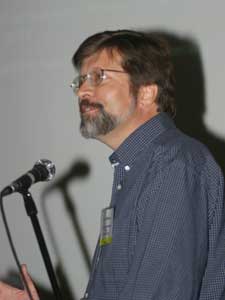Golden Alga (Prymnesium parvum) in Texas
Workshop Abstracts
Analysis of Prymnesium parvum Blooms in Lake Whitney, Texas
 Richard
L. Kiesling
Richard
L. Kiesling
Environmental Science Institute, University of Texas and USGS, Austin, Texas USA
Abstract.--Within the past three years, several major fish kills attributable to toxins released by Prymnesium parvum blooms have occurred in large surface-water reservoirs in the Brazos River basin. Between January and May of 2001, 2002, and 2003, Possum Kingdom Lake, Lake Granbury, and Lake Whitney, Texas, all experienced significant fish kills associated with P. parvum blooms. The factors controlling the appearance of P. parvum blooms in these reservoirs have yet to be determined, but the pattern of fish kills raises several questions about the physical, chemical, and biological characteristics that trigger the build-up of P. parvum populations leading to toxin production. We investigated P. parvum bloom dynamics in Lake Whitney by measuring the phytoplankton community response to in-reservoir environmental gradients and to experimental nutrient enrichment gradients. Indirect gradient analysis of Lake Whitney P. parvum densities during the spring 2003 bloom suggest a relationship between water chemistry (e.g., conductivity) and algal abundance. Experimental nutrient-enrichment gradients provide evidence of nitrate-nitrogen limitation during the P. parvum bloom. Nitrate additions produced P. parvum growth rates that were significantly elevated over control rates. Ammonium-nitrate additions produced significant negative P. parvum growth rates, and phosphorus and silica additions produced no net growth effects. Preliminary results from a nutrient-dilution bioassay suggest that micro-flagellate mortality is a function of P. parvum densities. Additional experiments are planned that simultaneously investigate P. parvum nutrient limitation, toxin production, and micro-flagellate growth rates along a P. parvum density gradient.
Download
presentation  (PDF 90.3 KB).
If you are unable to access this document, please contact
us for an alternative format.
(PDF 90.3 KB).
If you are unable to access this document, please contact
us for an alternative format.